Anticipatory Sets: 6 types proven to engage kids
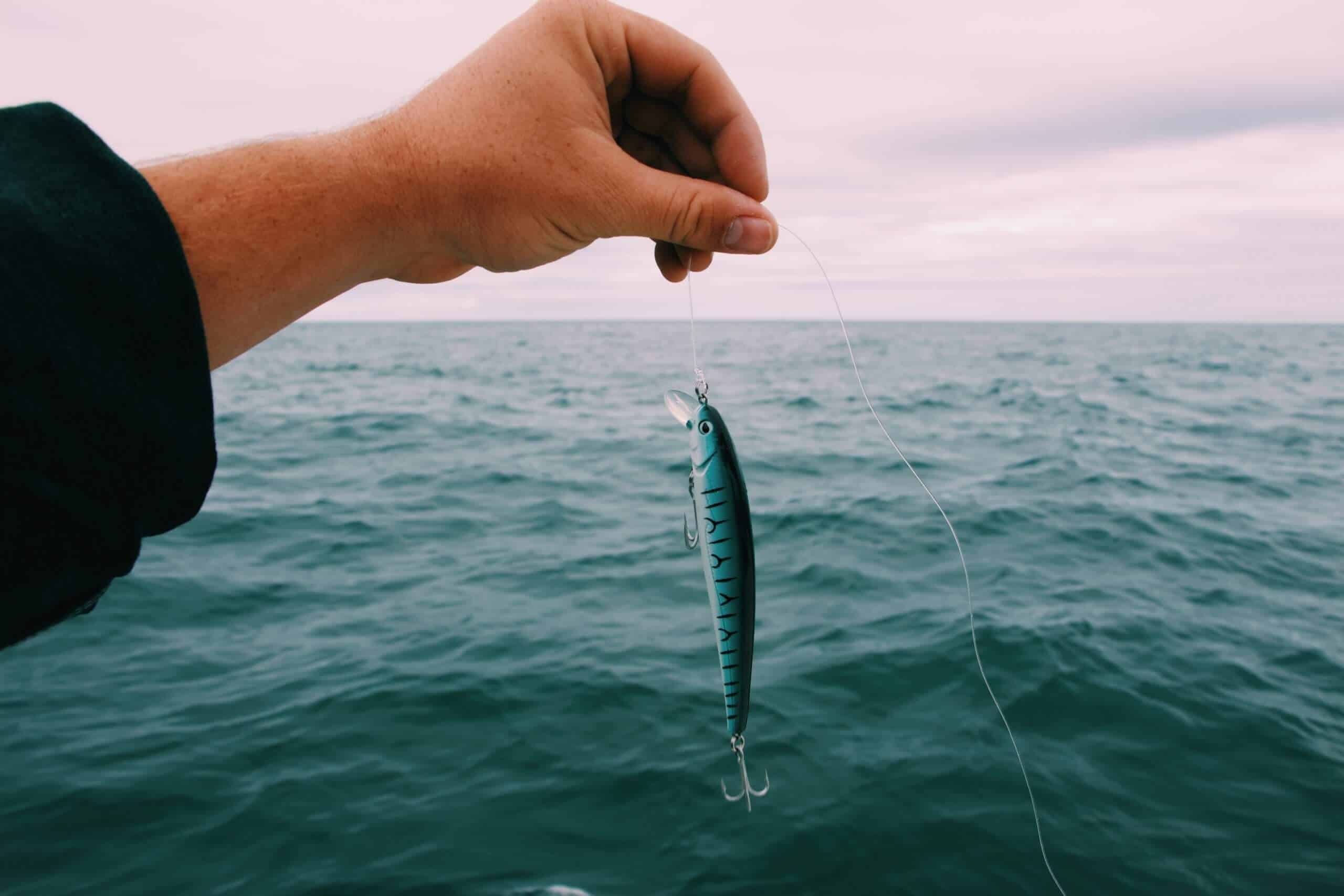
Anticipatory sets, or as some of us like to call them—appetisers, are one of the best ways to capture students’ attention. The most effective teachers know how to use these hooks to focus students on new objectives and transition smoothly between concepts.
If we want our lessons to engage students and make the content meaningful, we need to think like master chefs, crafting lessons that start with a tempting appetiser and build to a satisfying main course.
Use anticipatory sets, hooks or appetisers to begin the lesson
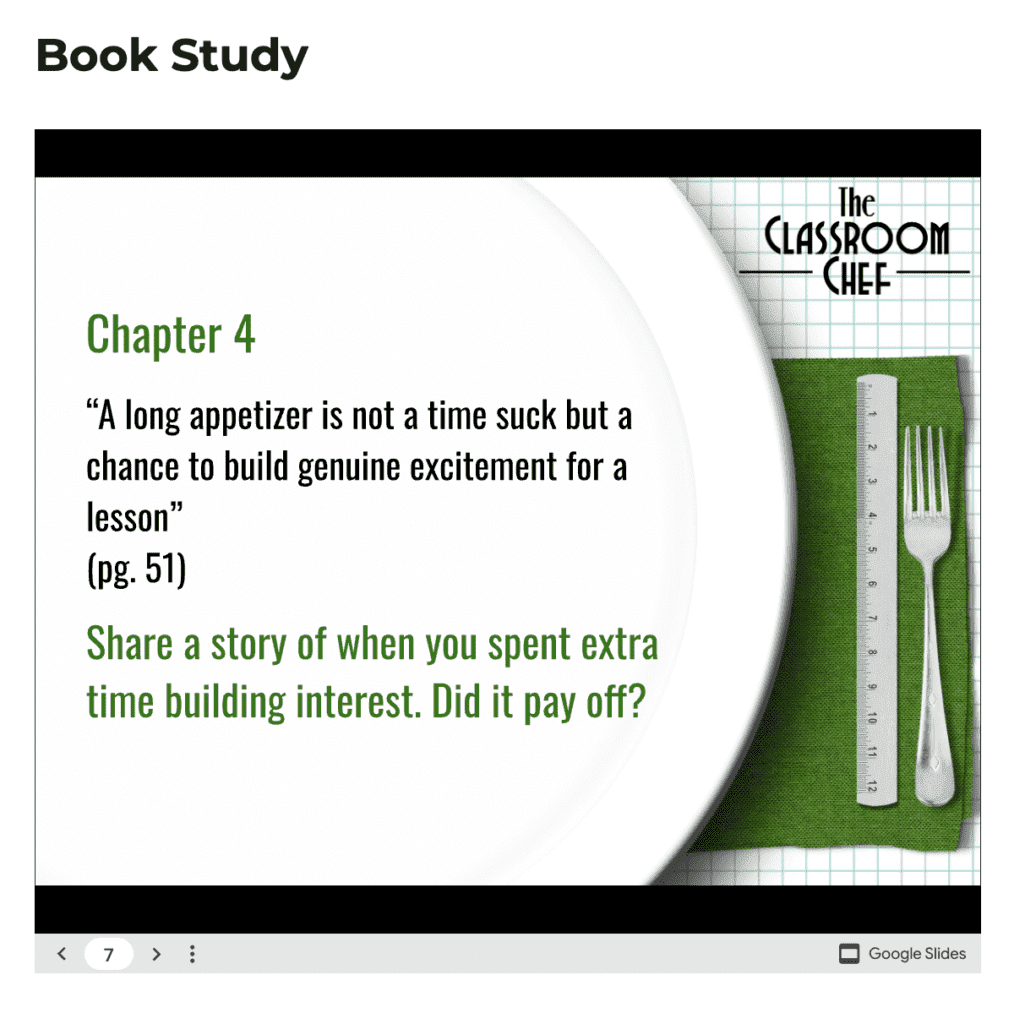
New Anticipatory Sets in the Classroom Chef
Although anticipatory sets are not a new concept, John Stevens and Matt Vaudrey’s Classroom Chef method offers a fresh perspective. They advocate for starting lessons with an engaging hook that sparks curiosity rather than diving straight into notes or instructions.
Instead of saying, “Let’s start with notes,” the hook says, “Here’s an intriguing idea.” Students become curious and eager to get into the lesson. This shift makes them active participants in their own learning.
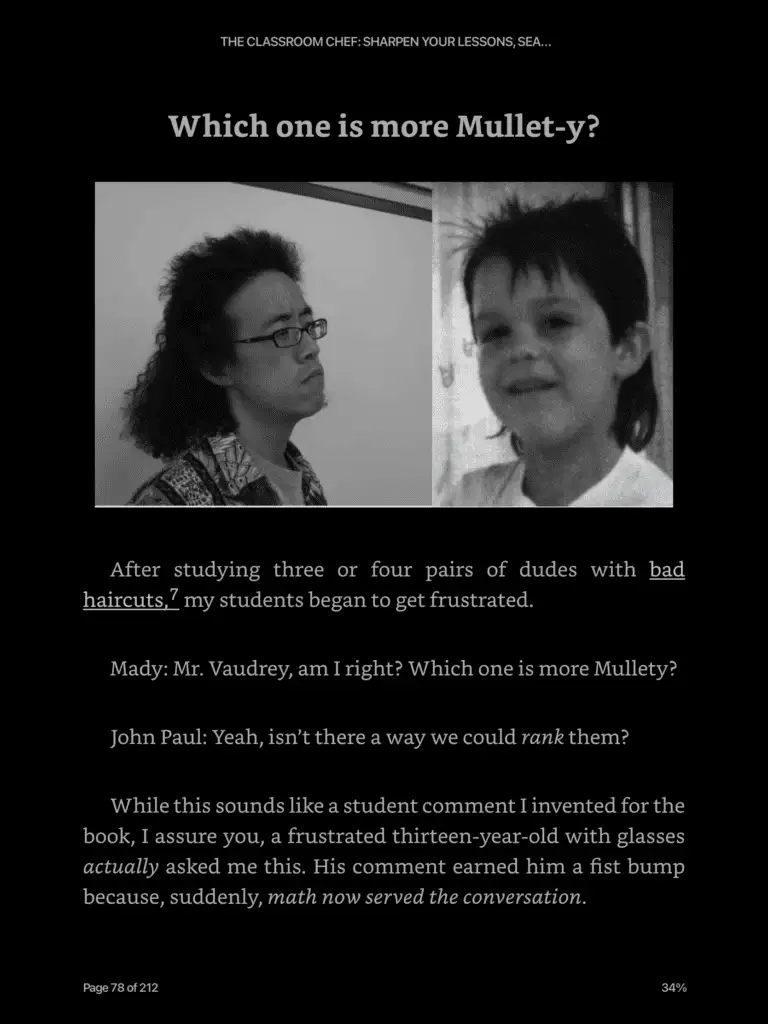
Appetiser Example: Which One is More Mullety?
For instance, in Classroom Chef, students are shown a slide titled The Mullet Ratio. Instead of groaning, they grab their calculators with excitement. They may not care about ratios, but they’re drawn in by the humour and novelty of the mullet. Does it matter why they’re engaged? No! What matters is they’re learning.
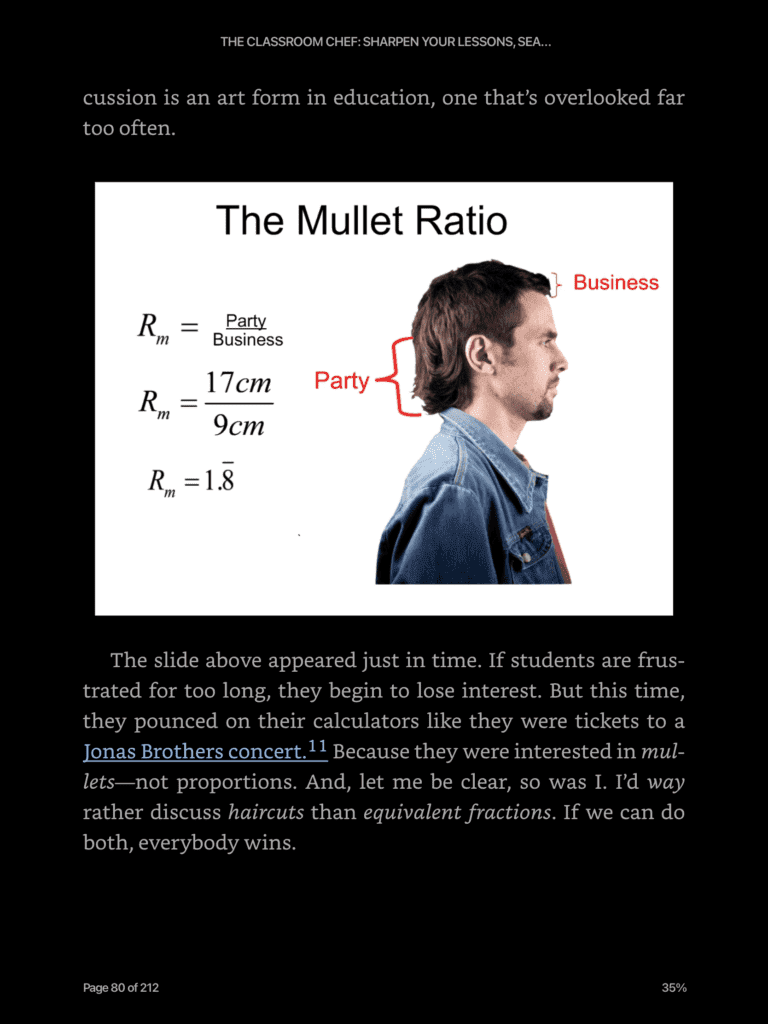
Planning is the foundation of any good instruction
A well-planned lesson, starting with an anticipatory set, lays the groundwork for effective learning. Without proper planning, lessons can lead to confusion, frustration, and off-task behaviour.
As teachers, it’s essential to know our objectives and use anticipatory sets to give students a clear and engaging entry point. Research shows that lessons without hooks or meaningful engagement result in minimal learning, no matter how much teaching is done.
Types of Anticipatory Sets
An effective anticipatory set should connect to the lesson’s main objective, acting as a bridge that leads students into deeper learning. Here are six proven types:
1 – Pictures
Visuals are a powerful way to spark curiosity. In Classroom Chef, showing students an image of a shark’s tooth size generated an instant reaction. Instead of the teacher announcing the topic, the students’ questions naturally led to discovering it. This approach invites curiosity and critical thinking.
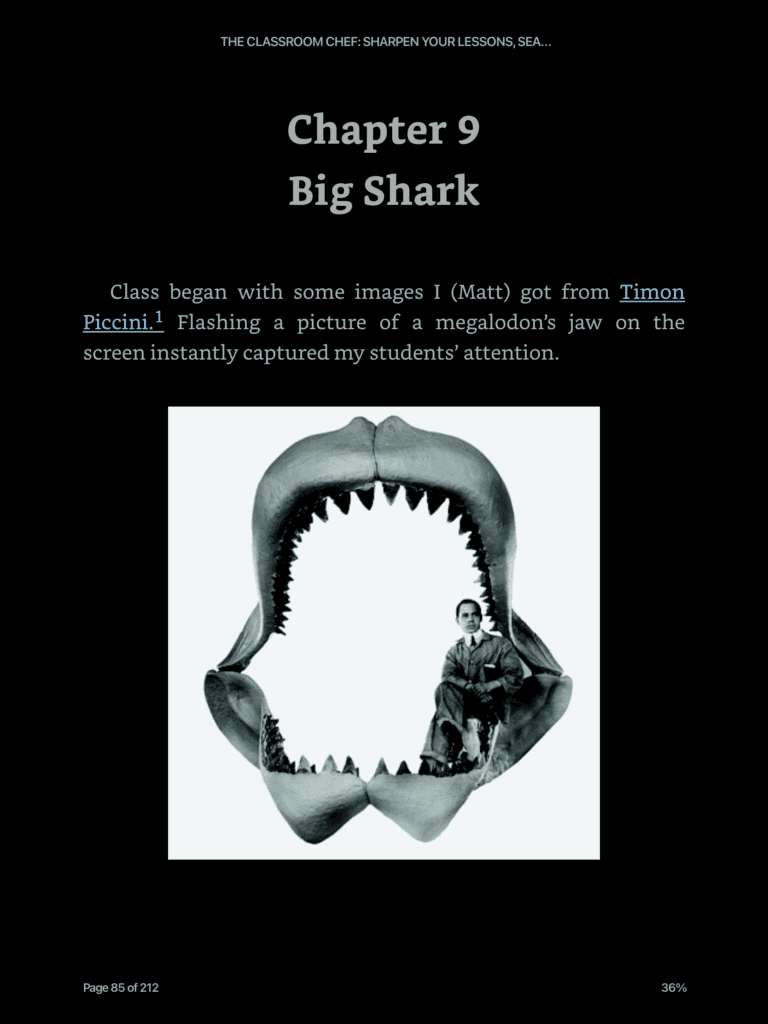
2 – Music
Incorporating music or movement in your anticipatory set signals to students that something fun and engaging is about to happen. The brain thrives on novelty, and even small shifts like moving desks or switching stations can wake up students’ attention.
Music can also set the mood for the lesson, creating a memorable starting point. Once students are focused, you can introduce an engaging question or activity to tie the music to your lesson.
3 – Act it out
A great way to start a lesson is to draw in the imagination with role play or some hands on activity that links to the topic being studied. For example a science lesson to dissect owl pellets, could start with asking students to act out a chapter from the class novel ‘Owls of Ga’hoole’.
The kids get excited and are ready to grab those magnifying glasses start dissecting dissect owl pellets. I’m not affiliated with this book in any way. I’ve used it in my classes with success.

4 – Play a game
A fun hook for older children is to play one round of “Three True Facts and a Fib” about something you will study. For example, if you are studying mammals, you could say – Mammals all:
- give birth to live young
- have hair or fur
- are warm-blooded
- always lives on land
Which of these statements isn’t true? As the last one is the correct answer, you can tell them to be watching for which mammals live in water as they learn about different kinds of mammals.
5 – Brainstorming
Are you going to be reading a book like ‘Call it Courage’ by Armstrong Sperry, about the Boy who was Afraid? Kids will love it if you bring a makeshift spear to class and spend a few minutes brainstorming how a Solomon Islander, or an American Indian might use it.
They will think about hunting and fighting enemies, but it will be a surprise that this historical fiction’s main character used a spear for fishing. I’m not affiliated with this book in any way. I’ve used it in my classes with success.
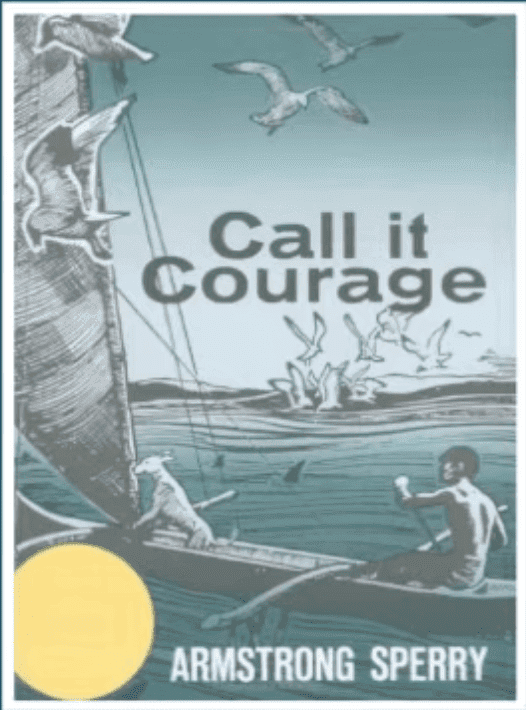
6 – Sensory activities
Having children hold and feel objects and then write about them gives them different sensory words that they don’t get from just looking at a picture—going to write a story about finding fossils? Have some fossils for them to touch and feel instead of just looking at a picture.
Want them to write about winning an award? Have them wear a medal or hold a trophy and discuss its significance first.
Many children have never seen a trophy or received a medal for something. The sensory experience will ignite their brain with new ideas about winning one.
Ignite Learning with Strategic Anticipatory Sets
Anticipatory sets are more than just attention-getters—they are essential tools for engaging students and ensuring focus from the outset. By using these hooks strategically, you set the stage for meaningful learning and student success.
I highly recommend The Classroom Chef for practical ideas and inspiration. While I’m not affiliated with this resource, I’ve found its strategies incredibly effective in my own teaching practice.

